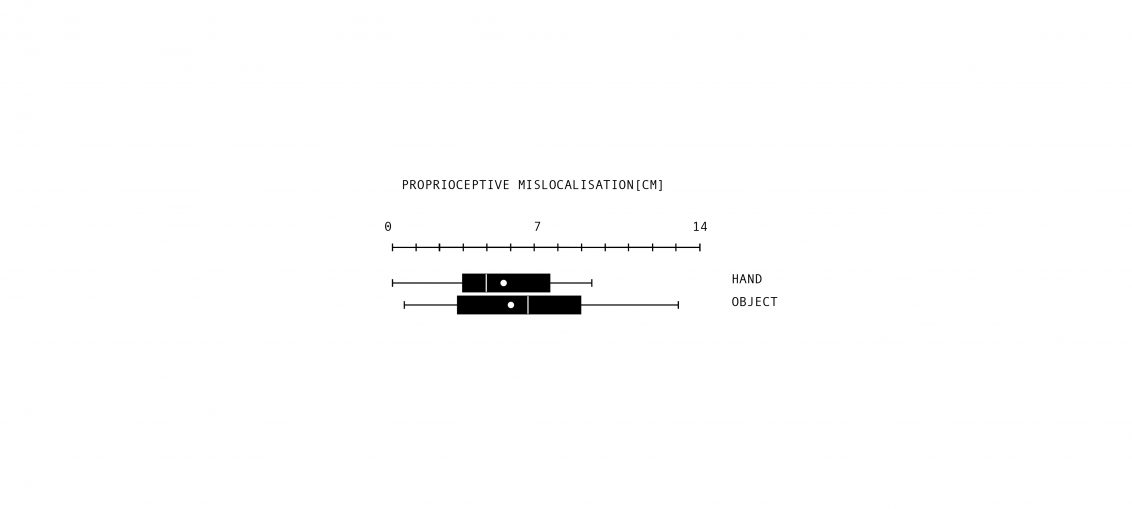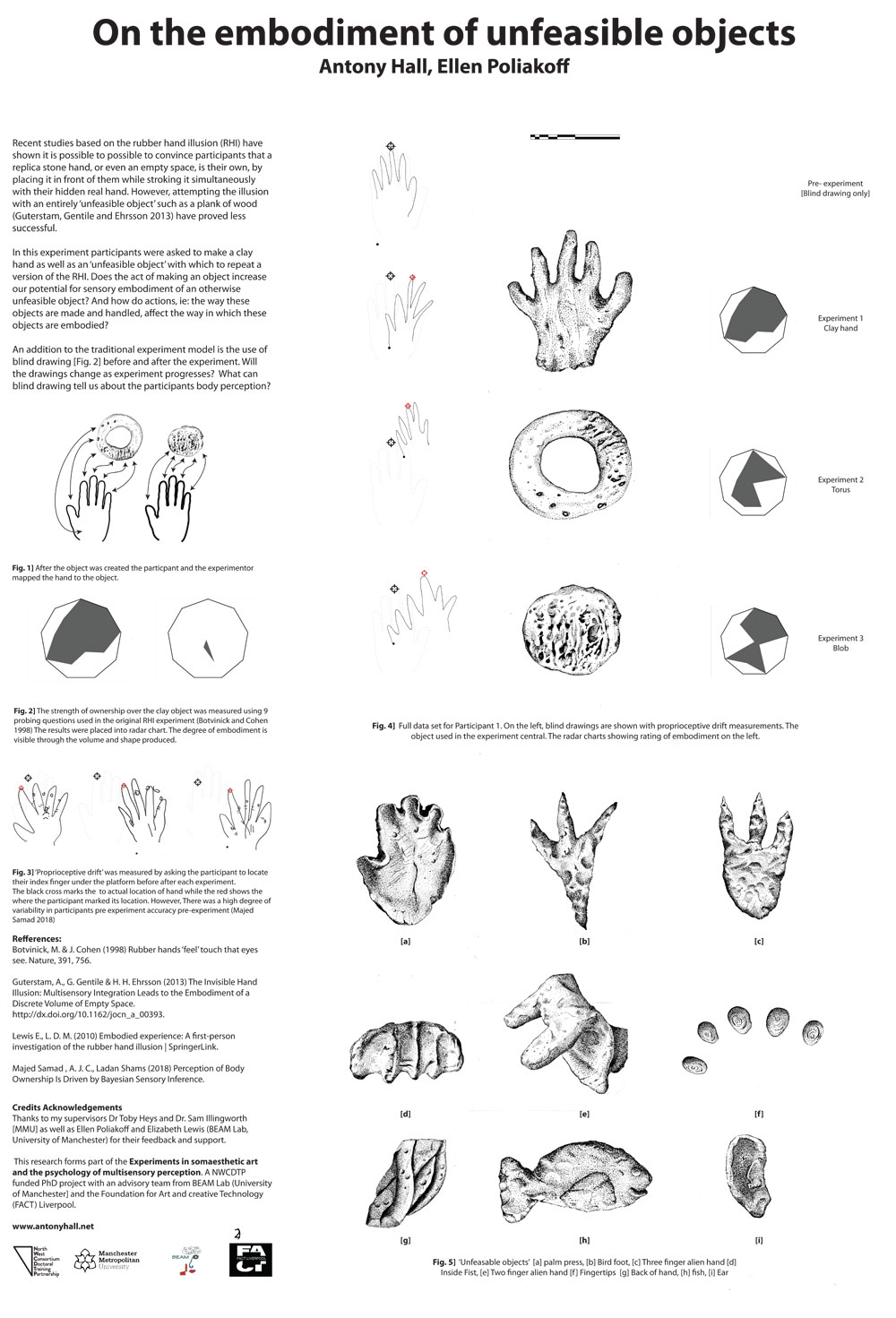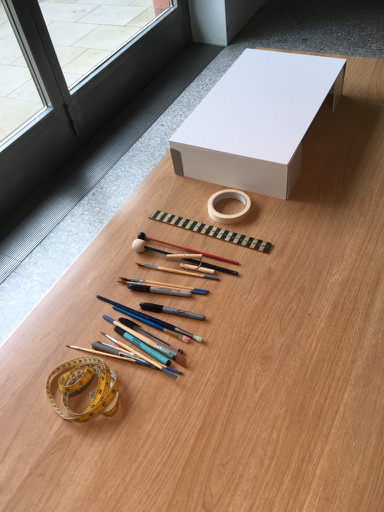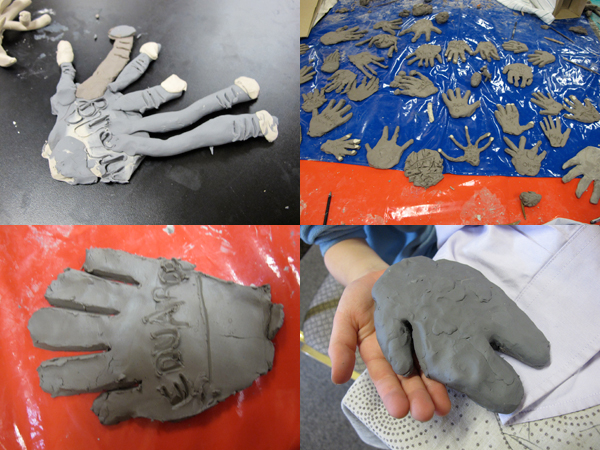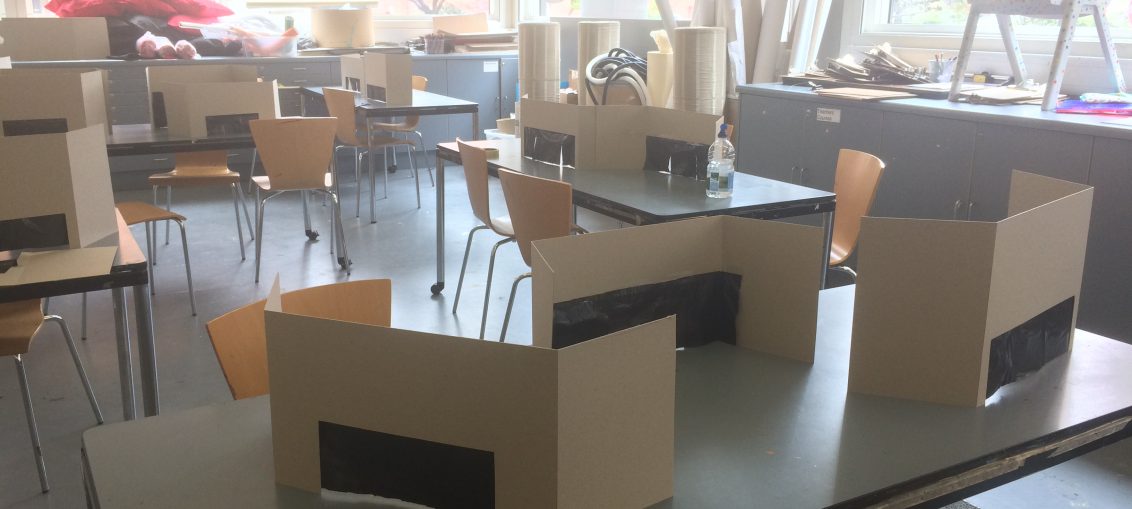Thu, 23 September 202110:00 – 14:00Location: Manchester Science Park, Bright Building, Pencroft Way, Manchester, M15 6GZV During this workshop, you will be guided through several activities and perceptual illusions to focus the senses before building objects for the ‘Clay Hand Experiment’ and the ‘Unfeasible Object’ experiment. The CHI is based on the Rubber hand illusion; only in the CHI and Unfeasible object experiments, participants build their own hand and other non-hand like objects rather than using a replica rubber hand. Using clay, it is possible to distort and manipulate the clay beyond the form of a hand and create different degrees of ‘unfeasible objects’ and attempt to embody these as part of our own body image. The workshop explores the possibility
Tag: unfeasible-object
The Clay Hand Illusion and the Embodiment of Unfeasible Objects
"In an artistic exploration, clay hands and non-hand-like, unfeasible clay objects were created by the participant and used to perform an alternative version of the rubber hand illusion. Most participants felt ownership even over these unfeasible objects, raising questions about the embodied experience of objects that we make." https://journals.sagepub.com/doi/full/10.1177/0301006620948502
Questionnaire results
Clay Hand Experiments
Workshops at Manchester City Art Gallery The aim was to deliver an engaging fun activity for all the family which related to the theme of the body and ideas around perception illusion referencing the Leonardo show as well as the Bridget Riley drawings in the Gallery. The workshop was open as a drop-in open to the general public and over the 8 days, we had around 800 people take part in total. The workshop served as an introduction to the idea of ‘perceptual and multisensory illusions’ and was based around my Clay Hand Experiment. I asked participants to work collaboratively to create their own hands and 'unfeasible objects 'with which to perform their own experiments on each other. It provided a
Rubber/clay Hand experiment UoM
I supported some seminars on the Rubber Hand Experiment with undergraduate psychology students, presenting some of my research ideas [unfeasable objects and the Clay Hand Experiment] The idea was they experience the experiment for themselves before designing their own.
Poster – BRnet Conference 2018
Clay Hand Experiment – Whitworth Art Gallery
This was the first of the public workshops performed specifically for my research. My experiments so far have taken place as 1-1 sessions in artists studios or at the university. In a more open drop-in format, the participants were invited to experiment on themselves. Opening up the environment to one of play rather than pure participation. Breaking the experimenter/participant loop, creating a flexible relationship between myself and the participants. This was more in keeping with the idea of a phenomenological investigation allowing the experience to ‘unfold’. This had a dual effect of actively involving and empowering the participants while being able to observe the process from the outside. This meant notes and make recordings could be taken more effectively. Further reading:Read more
Drawing the unfeasible objects
I chose to draw each clay object created for the unfeasible objects experiments. Why? The photographs don't seem to do justice to the significance of the object, its purpose and the process its undergone. Both with my self and the participant. They say drawing itself is a form of embodiment. "In the gesture of a drawing, there abides the question of how human beings hold memory. A trace of the body, the projection of an emotion, a record of the experience of seeing are woven into the gestured mark, a kinetically vitalized inscription that can serve as a site of empathy and invitation as much as a line of mimetic description" Marking Time, Figuring Space: Gesture and the Embodied Moment. Sara Schneckloth The
Clay hand experiments at Radiona
Some documentation from the workshop at Radiona in Zagreb [See Re-mapping the senses workshop] [For more information about the clay hand experiment see here] [For more information about the clay hand experiment see here]
Proprioceptive drift visualisation
[wpvideo VartTqKO ] My experiments show a strong ‘drift’ in the perceived location of the hand before and after the experiment. This is known as proprioceptive drift. I asked people to locate the position of their index finger under a platform before and after embodying a clay object. And also draw their hand without looking before and afterwards. This animation shows these superimposed, illustrating the drift away from the real location of the hand.
On the embodiment of unfeasible objects
Further to my last post detailing experiments relating to the embodiment of invisible and even third hands, here are some notes on my first 'Clay hand Illusion' experiments... The ‘Rubber hand illusion’ shows it is possible to convince participants that a rubber hand is their own by placing it in front of them while stroking it in the same way as their hidden real hand. The use of self-made clay hands, or objects [see below] in place of the rubber hand raises several interesting possibilities for exploration, which move away from the embodiment of replica body parts, and towards the possible embodiment of modified body parts, or completely 'unfeasible' objects.The clay allows for the gradual and immediate morphing of forms and for the
Blind drawing of hand
Blind drawing of hand starting from the left and using a continuous line, before and after experiments. Could this exercise be used as a measure of "proprioceptive drift" before and after 'Rubber hand illusion' type experiments? I will be exploring this idea soon with the research group at BEAM lab...
Clay hand drawings
Here are are a selection of drawn outlines of clay hands created by workshop participants aged 6 to 12 for the original clay hand experiment (see posts tagged rubber hand or clay hand) Participants of all ages were asked to create a hand and use it in place of a replica rubber hand, the idea was to test if a self-created hand was easier to connect with. The hands were then taken and worked on further, sometimes becoming more distorted and abstract.
Rubber hands ‘feel’ touch that eyes see
The first report on the Rubber Hand illusion. Published in Nature in 1998 by Matthew Botvinick, and Jonathan Cohen of the Department of Psychiatry, University of Pittsburgh... "We report here an illusion in which tactile sensations are referred to an alien limb. The effect reveals a three-way interaction between vision, touch and proprioception, and may supply evidence concerning the basis of bodily self-identification." "It has been proposed that the body is distinguished from other objects as belonging to the self by its participation in specific forms of intermodal perceptual correlation7,8. Subjects in our first experiment who referred their tactile sensations to the rubber hand also consistently reported, in both sections of the questionnaire, experiencing the rubber hand as belonging to themselves. Indeed,
Rubber-hand illusion experiment
As part of my research into perceptual illusions, I looked into The ‘Rubber Hand Experiment’. This is a classic low tech experiment that can help us "understand how sight, touch and “proprioception” the sense of body position, combine to create a convincing feeling of body ownership, one of the foundations of self-consciousness (Nature 1998, vol 391, p 756 )”. Recent studies have gone on to experimentally induct of out of body experiences or create body swap illusions. See the work of Henrik Ehrsson and Olaf Blanke. [see link http://www.eurekalert.org/pub_releases/2007-08/ucl-foe081407.php ] I invited some psychologists to the studio [including Lizzi Lewis of BEAM Lab and Paul Sermon] who I have expertise in this area, they brought presentations and some kit to
Clay hand experiment #1
Working again with Lizzi Lewis of BEAM Lab and Manchester Science Museum we developed a workshop based on the 'Rubber Hand Experiment'. As we had to work with a large number of people and we didn't have funding to get loads of rubber hands. So we made the hands in the workshop with clay and used gloves full of different materials, sand, gel, lentils, etc. This had some interesting outcomes, that warranted further research... As you can see the hands were diverse in form, for the illusion to be effective the hand does not need to be true to life necessarily. Some hands were made purposefully alien for experiments and seemed to work effectively. I wondered if participants are more likely
Perceptual Portraits
The ‘Perceptual Portraits’ workshop took place alongside the ‘To be Human’ [1] exhibition at Manchester Art Gallery, and was open to the public over 4 weeks. After drawing portraits of each other, both with and with, without looking at the paper, participants sat face-to-face around tables and placed their hands through a curtain into a box. Inside they found a lump of clay with which they were instructed to sculpt a portrait of the person sitting opposite. The resultant sculptural portraits ranged from simple smooth finger pressed forms, to heads with grossly distorted facial features. Post-activity discussions took place on how the visual result related to the perceived imagined form that was created in their mind's eye. Typically, the features


